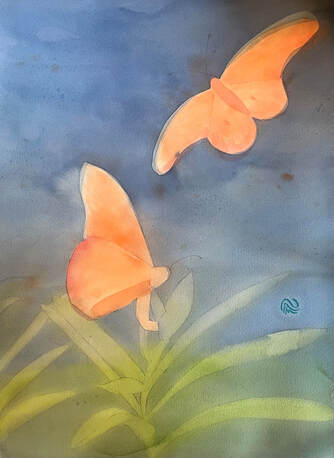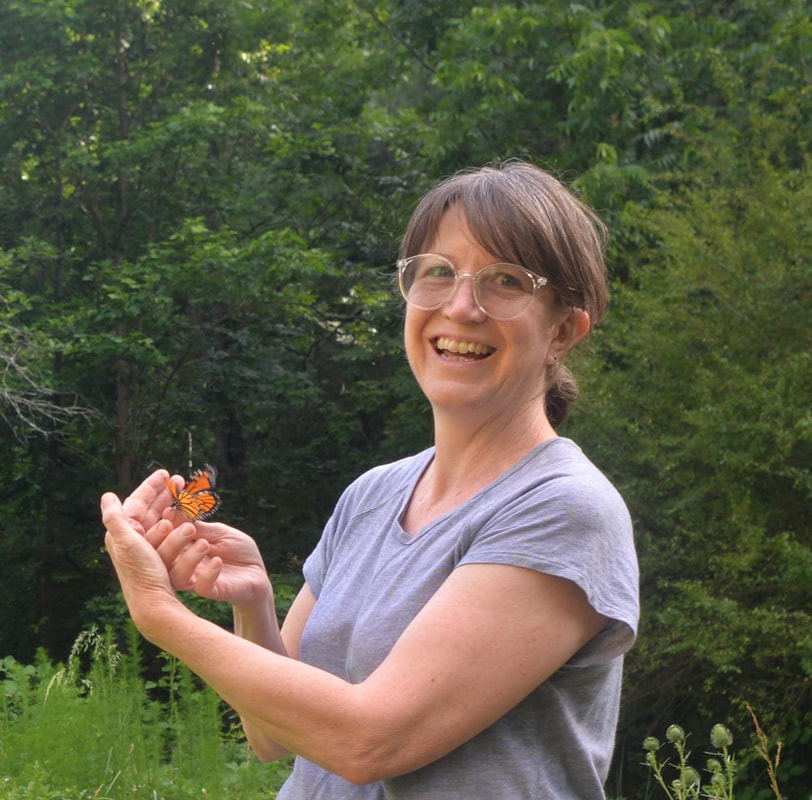|
I acquired seeds for the type of milkweed recommended for my growing zone and planted them in the ground. The first spring, I was happy just to have been successful growing the milkweed. But no butterflies. The second year I discovered three tiny caterpillars, but they disappeared in a short time. The third year it was April when I sighted a monarch butterfly laying her eggs on leaves of my milkweed. She seemed so happy that she would dance about and then lay another egg and then dance about some more. She stayed for hours, laying eggs and dancing. I felt as excited as she was. In the days following, I kept watch over the eggs, and then one day they hatched. They were so tiny! I brought a dozen of the tiny milkweed eaters inside to protect them from predators. I was smitten.
Over the next two weeks, I monitored caterpillars in the house as well as out in the garden. They grew rapidly, all the while consuming more and more milkweed. It wasn’t long before it was a challenge to keep up with their appetite. I had to buy more milkweed! I brought more caterpillars indoors for safety after I watched one being devoured by a wasp. I learned that caterpillars shed their skin five times while they are growing. Each time they emerge larger and more mature. In their final caterpillar stage, they looked powerful, just like I imagined a caterpillar superhero would look. They ate like obsessed eating machines. After days of eating they stopped and climbed as high as they could in their enclosures to find just the right place to hang from their tails in a J shape. It seemed to be the caterpillar version of meditating. After a time their antennae went completely limp. Then it was as if they unzipped their striped pajamas and wiggled out of them, exposing a bright green chrysalis inside. Again it was a shedding of the skin. One by one the caterpillars were replaced by chrysalises.
0 Comments
Leave a Reply. |
Archives
August 2023
Categories |


 RSS Feed
RSS Feed
